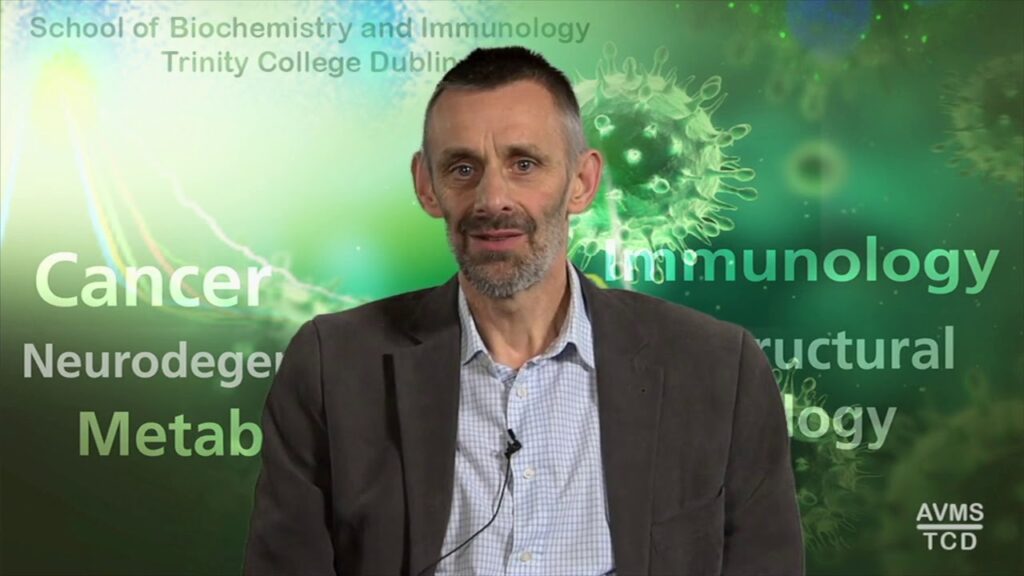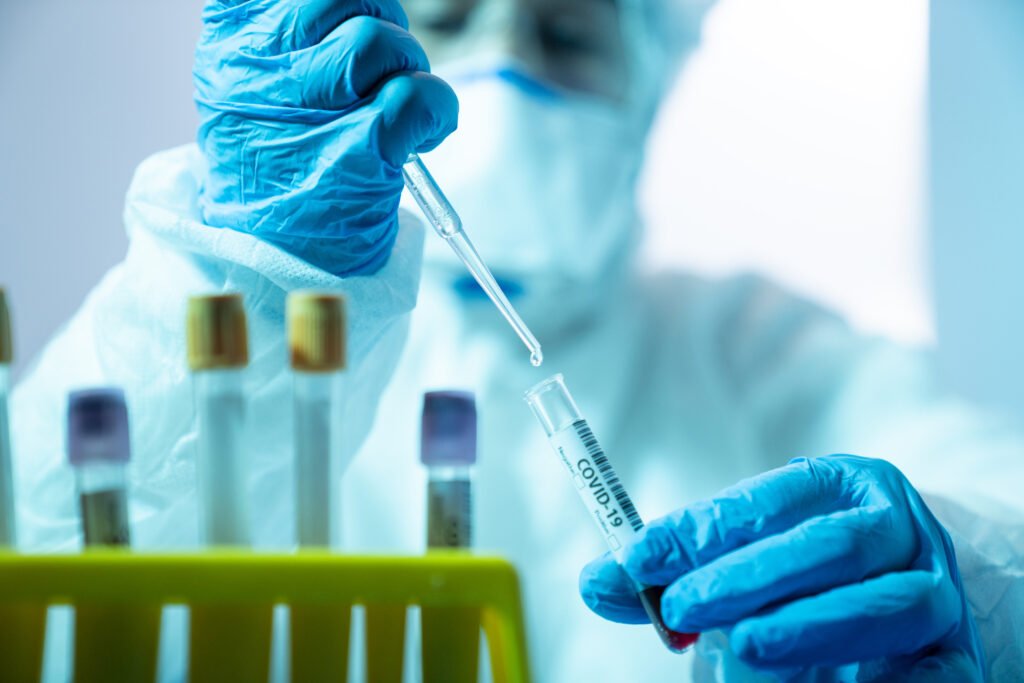Much commentary has surrounded the need to strengthen Ireland’s Covid-19 testing infrastructure. Niamh Cahill speaks to experts who outline why testing capacity and turnaround times must be improved
Ireland’s Covid-19 testing system has been under strain since its evolution in a hectic whirlwind of mitigation activity last March. As the virus took hold, the health system scrambled to build a competent, capable network to help control spread of the disease.
After a difficult start, there is now capacity to undertake 100,000 tests per week. But it remains to be seen if this will be sufficient in the months ahead, and more importantly, whether testing and contact tracing turnaround times will be fast enough to ensure we get ahead of the virus this winter.
In June 87,260 tests were undertaken, but as cases began to rise in July the total number of tests rose to 201,990, according to data provided to the Medical Independent (MI) by the HSE. Up to 21 August, 124,441 tests had been performed during that month.
Recently, HSE CEO Mr Paul Reid said the Executive was developing a new testing and contact tracing model. The number of contact tracers will shortly increase from 50 to 150 and permanent contact tracing staff are being sought to reduce the necessity for redeployments.
Further operational improvements are planned, but as yet a comprehensive long-term strategy has yet to emerge.
Current situation
According to the HSE, from 11-17 August over 55,000 tests were undertaken. Laboratory demand on particular days was in excess of 11,000 tests.
“In addition to this we took 54,592 swab samples this week [21 August]. This total swabbing figure includes over 21,000 taken in the community, over 16,000 taken in hospitals, and almost 17,000 taken as part of serial testing,” said a spokesperson.
Between 15-21 August, the median end-to-end turnaround time from referral to the completion of complex contact tracing was 2.2 days.
Around 86 per cent of GP referrals result in swabs being taken the same day or next day, while the median swab to lab result is 0.9 days.
“Most people, where we have correct contact details, will receive test results within 48 hours of conducting the test.”

On 21 August, there were 26 community testing centres and eight community assessment hubs in operation. A total of 39 hubs were planned initially and were operational on 29 May.
“We are continuing to see a significant increase in demand week-on-week, with a 42 per cent increase in community demand from last week to this week [21 August]. We have seen a significant rise in community testing referrals in the last month – from 6,000 per week five weeks ago to 22,000 per week now.”
The HSE has recommenced serial testing in nursing homes, with all staff tested every two weeks. Over 15,000 nursing home staff were tested in the week leading up to 21 August.
Two new serial testing programmes have been in design, one of which commenced on 21 August at meat/food processing plants (with fewer than 50 staff).
Tests will be performed for each staff member, voluntarily, on a weekly basis initially, the result of which will be reviewed by the national public health emergency team (NPHET) on an ongoing basis. A serial testing programme in direct provision centres is also due to commence at time of writing.
Although cases have increased, deaths and hospital cases have remained largely stable.
On 1 September, there were 36 confirmed cases of Covid-19 in hospital and six cases in intensive care units. In the seven days leading up to 1 September, 62,179 tests had been undertaken with a positivity rate of 1.2 per cent. Up to 1 September a total of 28,811 confirmed cases and 1,777 deaths had been recorded.
‘Too slow’
According to Dr Tomás Ryan, Assistant Professor at the School of Biochemistry and Immunology, Trinity College Dublin (TCD), Ireland’s test, trace, and isolate infrastructure is “still not fast enough, and never has been”.
He said the system was constructed in a “reactionary, rushed way”, which hindered it from becoming fully efficient in containing spread of the virus.
Speaking to MI, he said it was a “mystery” why Ireland was not undertaking full capacity testing (100,000 tests) every week if the system was capable of performing this level of testing.
Speaking at the Oireachtas special committee on Covid-19 recently, however, Mr Reid said while the capacity exists to perform 100,000 tests per week, it does not make economic sense to do so.
His comments underline how financial considerations are influencing the State’s response to the virus. Serial testing in high-risk settings, such as emergency departments (EDs), should be undertaken along with random testing in schools and other settings, according to Dr Ryan.
Ireland should be moving towards more rapid testing and becoming much quicker at sampling, he added. “Even with existing testing technology we should be faster at sampling people. We should be moving towards a website to report symptoms rather than going to a GP. I think we need to be moving faster on testing, faster on tracing, faster on every part of the process.
“Also, people need more messaging to report symptoms. The clock starts when somebody is symptomatic, not when somebody calls their GP. I think the faster people do that the better.”
According to Prof Kingston Mills, Professor of Experimental Immunology at TCD, turnaround times for testing are still too slow. He blamed “logistics” for poor testing turnaround times in the community, noting that in hospitals test results are returned in less than 24 hours.
“The more testing we have, the more chances we have of capturing positive cases. But the testing needs to be directed at the right groups and cohorts and it’s imperative that the testing turnaround time is as short as possible,” Prof Mills told MI.
Test more widely
According to Prof Anthony Staines, Professor of Health Systems and Public Health, Dublin City University (DCU), no test is “perfect” for Covid-19 or otherwise.
Like Dr Ryan and others, he believes the test and trace system in Ireland is “too slow”.

Prof Staines told this newspaper Ireland needs to “get ahead of the virus”, which requires testing “more widely”.
For example, he said, if there is an outbreak in a town and a small number of cases are identified, wider testing to locate other cases should be performed.
“If there is an outbreak in a town, and eight or nine cases are identified, there are probably 40 or 50 cases we don’t know about. Go out and find them. If 2,000 people live in a town, test 500 of them to see what you get.”
“At the moment we are completely reacting to cases and we are running behind. The higher number of people we’re testing the better. If we have a low test count it means we’re missing a lot of cases.”
Speeding up the process and testing more widely are important to help limit rapid spread of the virus, he stressed. But he admitted that doing this is “really hard and far from trivial”.
On this point, a HSE spokesperson provided an insight into the “human practicalities” involved in testing and tracing turnaround times.
“There are only certain hours when it’s reasonable to swab someone or contact them; some people need more support than others when receiving the difficult news, like a positive result, so our staff will spend more time on the phone helping them; sometimes the contact details we receive are incorrect; and, sometimes it’s as simple as people not answering their phones. These are all real aspects of the process that occur on a daily basis and that our teams continue to work through.”
‘Population-wide testing’, also known as ‘mass screening’, ‘mass testing’ or ‘population-based screening’, could be expanded in Ireland. According to the European Centres for Disease Prevention and Control (ECDC), population-wide testing refers to “carrying out a high volume of tests for SARS-CoV-2 on individuals, irrespective of whether they are displaying symptoms, in a given population in order to identify cases with laboratory-confirmed SARS-CoV-2 infection and inform decisions regarding intervention measures”.
For instance, “testing of many households at the population-wide level will help to better understand the epidemiological situation in a country with more granular demographic data,” according to ECDC.
Population-wide testing is currently being undertaken, in some form, in Denmark, Germany and France, among other countries.
However, it has not yet occurred to any great degree in Ireland, apart from in individuals in specific settings, such as nursing home staff and the HSE seroprevalence study undertaken in Dublin and Sligo, the results of which were recently announced.

International experience
There have been numerous reports of other countries that are conducting far greater numbers of Covid-19 tests than in Ireland. But according to Dr Ryan, an efficient testing system is not solely reliant on capacity.
“We have done far more tests than South Korea and it is a model for how to suppress the virus without lockdowns because it is so good at testing. It’s about being fast and about stamping out outbreaks before they become a problem,” he said.
“Right now in South Korea we’re saying they have problems, but if you normalise for population per capita they’re only getting about 30 to 40 cases per day now for what we would be getting. They test less, because they need to test less, but they test better.
“Speed is the most important thing. If you’re too slow the amount of people you need to test grows and it’s a self-defeating project then. So capacity is very important, it’s essential, but it’s secondary to speed.”
Ireland is not the only country that is slow, “testing has been an issue around the world,” according to Prof Mills. Some countries have done well such as New Zealand, Taiwan, South Korea, and Norway, for example, he said. However, Dr Ryan stressed all these countries have efficient health systems.

“Our healthcare system is not efficient, it never has been, and we don’t have an electronic patient identifier, which makes it difficult to trace people and we don’t have integrated IT systems between hospitals.
“Systems don’t talk to each other in terms of IT. It makes it much more difficult to disseminate data electronically and that has been an impediment to the efficiency of the system in Ireland.”
A HSE spokesperson said it is “continually upgrading the software” used to support the Covid-19 testing process. “The HSE’s public health and ICT teams are working very closely to develop the solution and the work plan is developed in close conjunction with public health to meet their requirements.
“The latest updates to the software will support improved automation of loading test results thus improving the overall timeframe and an outbreak module to support complex outbreaks in locations.”
According to Prof Staines, Ireland is testing “a reasonable number of people, but we are nowhere near the top of the testing rank”. He added that “we could test a lot more”.
Denmark, for example, which has a population of 5.8 million, is conducting 30,000 tests per day, according to Prof Staines.
Travel
Overseas travel has largely ground to a halt since the pandemic began. But potentially, with years ahead of living with the virus, is it realistic to continue to discourage travel and insist on 14-day isolation periods?
Prof Mills does not think so. The current system for travellers into the country, he believes, “is not working.”
People travelling to Ireland are asked to self-isolate for 14 days, but it is not a legal requirement to do so. He suggested an alternative process, which includes greater and more rapid testing processes.
Individuals would not have to self-isolate if they underwent a Covid-19 test three-to-four days before departure, he proposed.
Travellers would bring a certificate with them to state they were negative and then undergo testing again on arrival. If the result is negative twice, they could “go about their business”, he stated,
“That gets everybody back to work quicker. Businesses are dependent on people travelling outside of the country and if people are having to self-isolate on return then it puts them out of the system for 14 days, if they are people who cannot work from home.
“That’s an impediment and that’s something that the testing people really need to take on board and to facilitate.”
To do so, however, the development of rapid testing procedures, which are now coming on stream in other jurisdictions, would be required.
“For example, in Vienna airport, when you arrive you are tested within two hours and told within that period of time whether you are negative or positive. That is because they are using rapid testing approach.” Rapid testing, he noted, is being rolled out in countries including the UK, Germany and parts of the US.
The HSE’s spokesperson said it is continuing to “monitor and evaluate where indicated, new rapid testing platforms and methodologies as they come to the market”.
What is the end goal and how are we going to live in that end goal and how and when can we achieve it?
In relation to overseas travel, the spokesperson said: “We [HSE] have drafted an approach to airport testing, but have not yet been advised to commence this testing.”
Saliva testing
The use of saliva tests are under consideration, according to the HSE, particularly with regards to testing children. This is because the test is less invasive, and according to Prof Mills, more efficient than the current polymerase chain reaction (PCR) test, which involves taking trained testers taking swabs from the nose and throat.
“Lots of studies have shown that first of all, saliva is more sensitive. Secondly, you don’t need a test centre, so you don’t have to have people going and someone put a swab up your nose, you just spit into a container in a GP surgery and send it to the testing lab. That’s a lot easier way of doing it. We haven’t explored that effectively in Ireland and we need to,” he suggested.
The HSE is investigating the possibility of using a saliva direct test. However, “work is ongoing and no decision has been made as of yet,” said the HSE’s spokesperson. A report by HIQA in August looked at whether saliva or nasal specimens could be used as an alternative to nose and throat swabs.
According to the report: “The use of alternative clinical specimens, such as saliva or nasal, may offer less-invasive options with potential benefits in terms of improved patient comfort, reduced transmission risk for healthcare providers and the possibility of a self-collected method.”
Messaging
Effective public messaging is a critical part of containment but has received some criticism from healthcare professionals in recent weeks. According to Prof Staines, messaging around Covid-19 “is not that clear”.
He said that “clear, simple messaging is critical”. In order to encourage more people to come forward for testing, particularly those who are afraid they will lose money by being out of work, a new sick pay scheme for the private sector is required to ensure a person’s salary will be paid while they are waiting for a test, added Prof Staines.
“We also need to get people to understand that testing is free,” he said.
This is particularly important because crude, unpublished data he has seen shows many cases of Covid-19 are occurring “in more deprived areas”.
Dr Ryan agreed, stating: “I think the messaging needs to improve. I think that the messaging is very clear, the guidance is very clear, but it’s also very complex and very nuanced. That’s okay, but the communication of it needs to be better.”
“We are still working in a very reactionary manner and we expect the Government to come up with a new strategy very soon,” he added.
But what should a successful strategy look like?
According to Dr Ryan, “a strategy is about what are we actually aiming for. What is the end goal and how are we going to live in that end goal and how and when can we achieve it? What are the expectations for what that will look like and how are we going to get there? It doesn’t seem to me like we’re ever had a strategy.”












Leave a Reply
You must be logged in to post a comment.